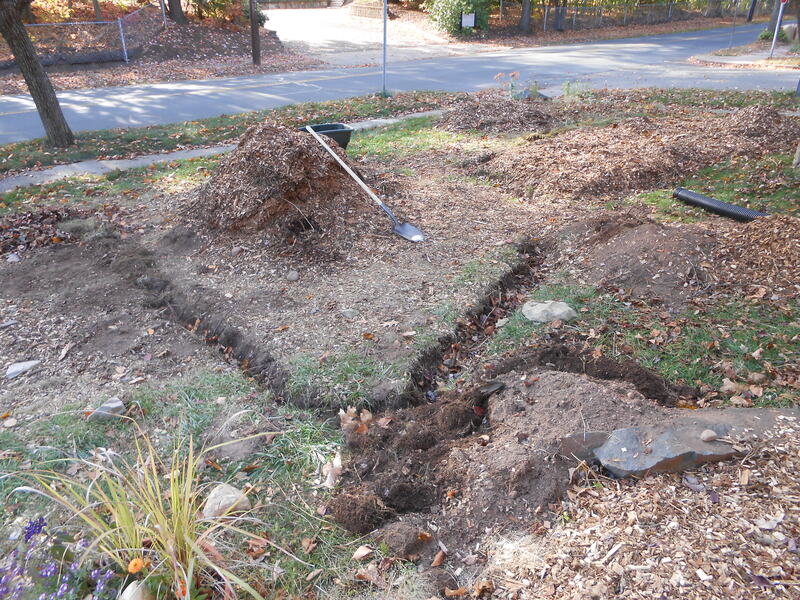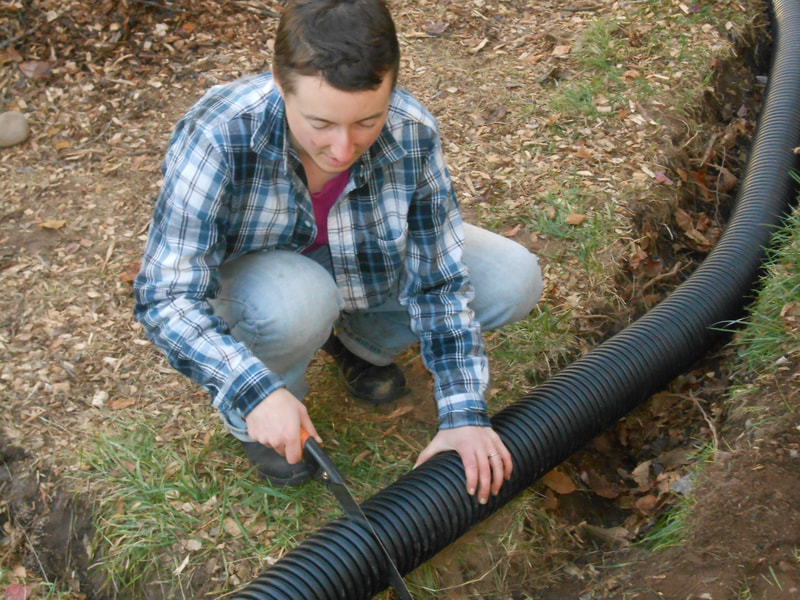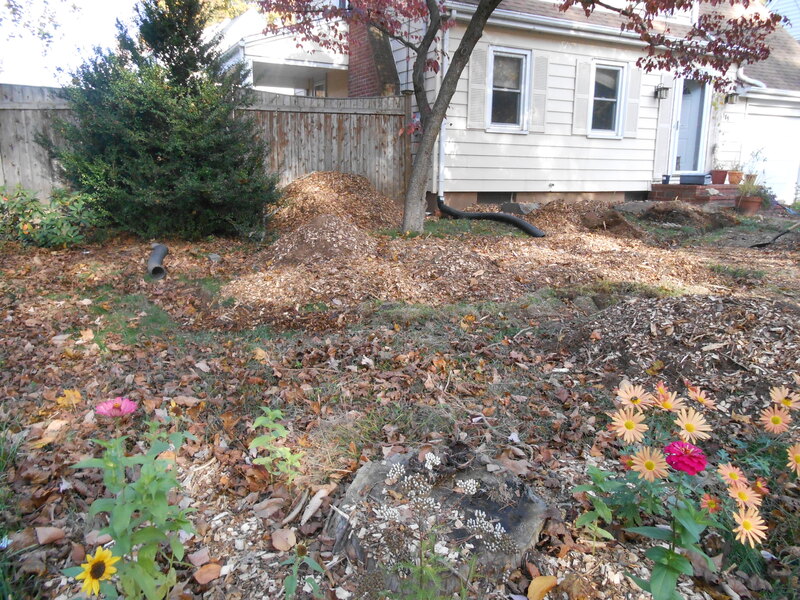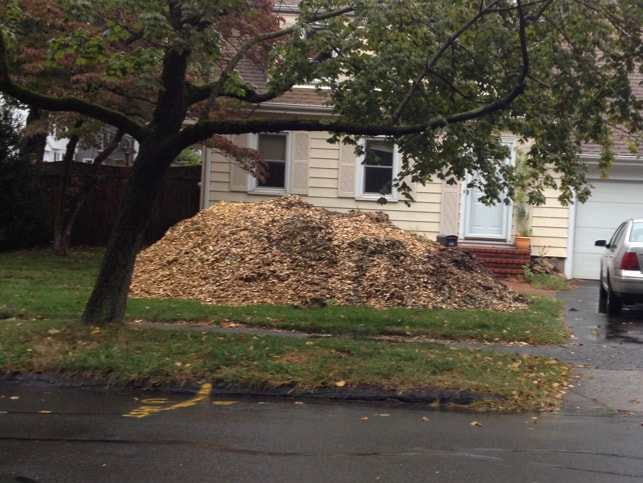|
Long ago, before I even had the prospect of growing fruit trees, I read Ann Ralph’s book Grow a Little Fruit Tree cover to cover like an enormous dork. I checked the book out again from the library because I'm getting pretty darn close to planting some fruit trees.
Boy am I glad I'm re-reading it. I had mostly forgotten what the book said. Since I’ve been reading so much about Food Forests (a larger-scale permaculture way of growing food) I had stopped considering little fruit trees. We’re not talking dwarf trees, which tend to be unhealthy due to weak roots. We are talking about a regular healthy tree kept at 5-6 feet tall with special pruning. She describes how its done very well in her book. Ann makes a very convincing case for why home gardeners shouldn't grow full-size, twenty foot trees: twice a year pruning on ladders, thinning 1500 pieces of fruit, and processing 600 fruits in a month with lots of spoiled fruit still on the ground. A 6 foot tall fruit tree can be pruned from the ground, and produces a manageable 100 pieces of fruit. I was planning on planting a full size Golden Russet apple in our yard, but now I'm seriously reconsidering. In that space, I could have several types of manageable fruit. The book explains why tiny trees are so useful, exactly how to trim them so they stay tiny, and how to care for the trees moving forward. If you’ve ever considered growing fruit in your yard, I can’t recommend this book enough. Or you can google search the Grow a Little Fruit Tree article in Mother Earth News magazine. See, this is why I'm so slow to reach conclusions! There's always information still out there that will improve a decision. I'm working on making decisions at 75% certainty rather than waiting for 100%, and I think I'm about at 75% now. Gathering information has felt especially important on an endeavor like planting fruit trees, in which I have zero experience. I am so inspired by Grow a Little Fruit Tree. Excited again by the idea of fitting multiple varieties of fruit into our little yard and trying out the method. Now to scheme more about what kinds...
0 Comments
I can’t believe we finished the irrigation trenches. I did not expect them to get done today, but it happened. I’ve been so sick of our yard looking like a disaster and imagining the neighbors’ disgust. We’ve had wood chip pile for about a month and have been working on trenches for three weeks and people ask things like “what happened?” And “what are you guys doing here?”. It is always with kindness or curiosity (we are lucky to have a really wonderful neighborhood) but I started getting really impatient with the project. The goal with the irrigation is to capture gutter water and slowly sink it into the soil using perforated drainage pipe nestled in wood chips. The gutters from this house run straight into the street, making the yard a desert and wasting the precious water. First we dug trenches, then we cut the pipe to the proper length (it’s very easy to cut.) Then we covered it with wood chips. After that, you wouldn't even really know the pipes were there. Now we’ve go our swale trails! A swale is a ditch designed to catch water, and this one is made into a pathway for gardens that are short on space. Will it work? I don’t know. I'm beginning to have some doubts. But I have fully accepted that we're going to make some mistakes because we've never done any of this before. There will be some inefficiencies and extra work done as we try some things. Worst case scenario is the perforated pipe won’t work but we dug some beneficial swales.
Maybe you’re not bored with this post yet. Maybe you noticed that there is no gutter attached to these pipes. You have a long attention span and you are also correct. We currently run a connecting pipe from the driveway downspout to these swales. It’s not ideal because it crosses the driveway, but water was treated like garbage on this property. (Improperly disposed garbage, at that.) The downspouts are designed to go straight to the sewer, and the driveway is double paved so there’s no median to sink the gallons of water coming from that downspout. It’s all just thrown away without a thought. Water from roofs is a great boon, and if you slow it and sink it into your yard, you’re saving water! The moral is: get greedy, keep your water. These swale trails are ostensibly what we ordered the wood chips for and it’s hilarious because they required a total of about 20 shovelfuls of chips. The other day, I wanted to cut down some grassy weeds in back. But a cricket chirping reminded me that she lived there, and I chose not to. I did, however, need to dump some woodchips over some weeds, and displaced a lot of teeny tiny moths. No idea what they are, but it doesn’t matter what they're called; they live there and I ruined their homes.
Am I saying we shouldn't do work in our yards? No, I'm saying slow down and observe the tiny lives around you, and let them influence your choices. This past weekend, the green yards of my neighbors made me think it was time to rake, so I raked some small piles and stuffed them into a bag. I intend to use them later in compost. Later, I looked at the bag and hoverflies were hanging around the opening. I haven’t seen hoverflies in weeks, if not a month. It’s no accident that they are gathered around the discombobulated leaf pile—they probably used to live there. Maybe there were eggs in there too, and I had jumbled them all up. If you plan to remove leaves, get them up right away. Little insects take shelter in them, others lay eggs in them, and moths bury their cocoons in them. Disturbing leaves can damage their populations. You can be the hero Gotham needs by cleaning up your leaves early and often. Or at least you can think a little more deeply about the process. So, if you're not deranged millionaire with a bat suit, what should you do? If you have a lawn, you can mow over the leaves to grind them into soil-feeding fertilizer pieces. This definitely ruins bug habitat, but it does feed the soil. Walking through the leaves before mowing can save some bugs' lives by giving them a chance to move fly or crawl away. Or, you can imitate a forest, where tree leaves disappear into shrubs and plants. Plant these around the trees in your yard. Hardy groundcovers can compete with established tree roots. Then you won’t have to rake or mow! And if you live in a very rural area where no one sees your leaves—leave them! (Thick leaf mats will smother grass, though, so consider that.) Don’t be duped like me. Don’t let your neighbors' pristine, clean, dead lawns convince you to rake your leaves up. Maybe be you can find a balance by raking the most public areas only and leaving the backyard covered. Begin to see your leaves in a new way: as a home different from yours. Oh, and if it's unclear why I'm vehemently advocating for bugs, know that they are the basis of the food chain. If we lose insects (and we are dangerously close) Nature's Jenga tower crumbles. This wood chip pile and the associated projects and schemes are really draining my energy. It's positive, because we can see progress being made, but I can't find time to write due to all the physical work.
The short summary is we are trying to build irrigation trenches to match the fruit trees and vegetable gardens. It involves configuring gutter downspouts to match the trenches (we plan to irrigate with roof runoff), figuring out how to avoid the buried gas line in our yard, and figuring out exactly where trees and vegetable beds will go. Oh, and getting the giant mulch pile out of the front yards one way or another. And it is not helpful that whenever I sit to write, the cats come clambering onto my lap, ten claws supporting 10 or 17 pounds. One of them barfed on my base design plan yesterday, so I had to remake that this morning. And the house is an atrocious mess in general. here's the summary. It's all moving too fast to document, but I will have to find a room with no cats (does such thing exist) and some time (does that exist either) to write it all down. |
Categories
All
Archives
August 2021
|
Proudly powered by Weebly









 RSS Feed
RSS Feed